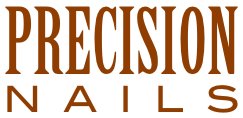For beauty professionals who work alone, the concepts of salon leadership and teamwork don’t apply. Not to minimize the challenges of business ownership, but individuals providing services in the privacy of their own salons cannot demonstrate salon leadership or contribute to a team. In effect, they’ve isolated themselves from other beauty professionals, for whatever reason. Many individuals would explain that they made a choice between working alone or with a dysfunctional group of coworkers. If those were the only options, that would be understandable. Instead, this is a false choice based on personal experiences and/or a generalized conception of salon life.
We’re all familiar with the stereotypical salon in which the owner is either clueless or a tyrant, and the workers are crazy, nasty, dirty, lazy, incompetent or otherwise “toxic.” How many reality shows exploit this premise for dramatic effect and ratings? More than I can count, and none that I watch. It doesn’t matter what kinds of services (hair, skin, and/or nails) are offered, if this describes your salon, I cannot sympathize with you. How does someone tolerate that level of dysfunction and sustain his or her professionalism, integrity and passion? Is this the best the beauty industry has to offer? Of course not, but this conception may be so pervasive that many cannot envision the possibility of a suitable salon environment.
My first experiences after beauty school and licensure involved working in five different hair salons over the course of five years. In each case, the salon owner was a licensed cosmetologist who worked full time, and the other professionals would rent stations. None of those salon owners had any specific training on ownership, though they had good intentions. When searching for a station to rent, I don’t remember ever being asked to complete an application, submit a resume/job history, demonstrate my work or provide evidence of my competence or compatibility.
Each of us was responsible for handling our individual businesses: purchasing supplies, marketing services, scheduling clients, maintaining insurance, paying taxes, etc. We did these tasks independently as the owners took a hands-off approach to their role. While we supported each other through referrals, our efforts were not coordinated to represent the salon as a whole. There was very little, if any, leadership or teamwork. For example, the only salon meetings I can recall were held in response to some immediate crisis or simmering tensions, and they usually devolved into unproductive gripe sessions. Some would blame the salon’s problems on a lack of communication, but a more substantive problem was the lack of structure, specifically clearly defined roles and expectations (job descriptions, duties, rights, responsibilities, policies and procedures, etc.). Moreover, some coworkers were not as professional as they could have been. Behaviors that would be cause for dismissal in other work settings (tardiness, substance abuse, theft, poor workmanship, insubordination, etc.) were often tolerated. Lesson learned: no one individual is so important that they can be allowed to disrupt the entire salon team.
Sound familiar? Just because many salons “function” a particular way doesn’t make it right; unfortunately, the most common practices within the beauty industry are not the best. Most valuable lesson learned: doing the right thing can be expensive and inconvenient, and likely means ignoring what other salons do. Needless to say, none of these salons was ideal, but instead of being discouraged, I credit the owners/coworkers for helping me build my business and giving me the confidence to work alone, and later take on employees.
Thus, I can certainly relate to those who choose to work alone. Technology makes that choice seemingly more acceptable; we can connect with others through social media, texts, emails and video, in addition to reading trade magazines and attending beauty shows, networking events, and classes. However, despite its convenience and affordability, technology cannot replace the quality and depth of interaction that a continuous working relationship can provide. While avoiding conflict and having control may be reason enough to work alone, some would acknowledge that they feel lonely, uninspired and burdened. In that very real sense, their independence may limit their professional growth and decrease their job satisfaction. Working collaboratively with other beauty professionals could be the change you need to reignite your passion for the industry.
If you’re waiting to discover the perfect salon, business partner, boss, employee or coworker, why not consider how you could create that experience for yourself and others? I’ll never be the perfect salon owner, but as I look back over the last 20+ years, I’m grateful for the mistakes I’ve made. There's no amount of time, training or money that qualifies someone as a “good” salon owner; there’s only progress towards creating the best possible environment in which professionals thrive, clients receive excellent service, and the owner meets all their financial and legal obligations.
By Jaime Schrabeck, Ph.D.



